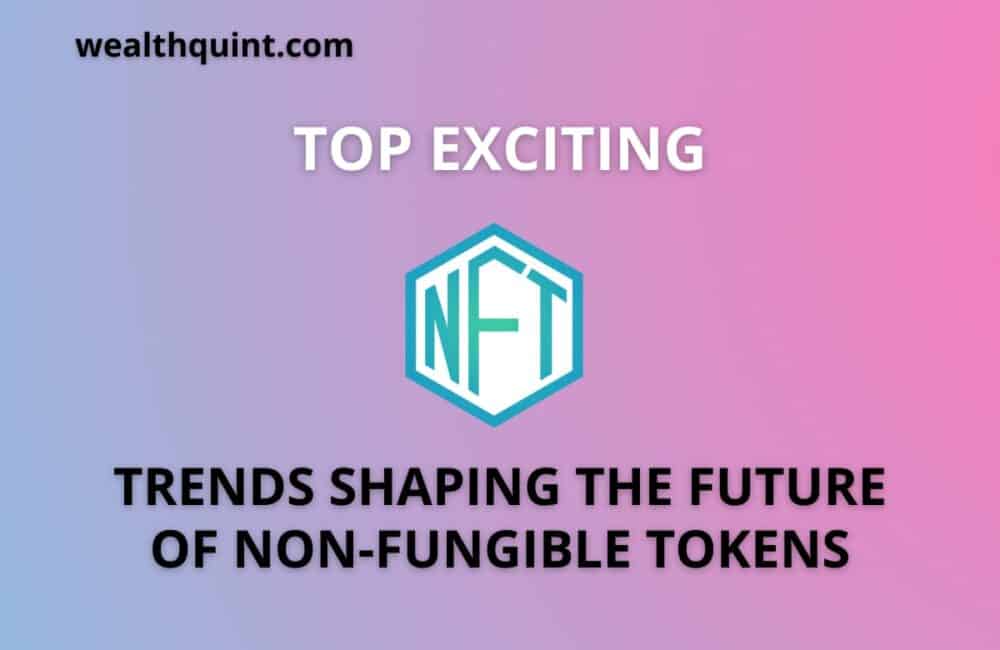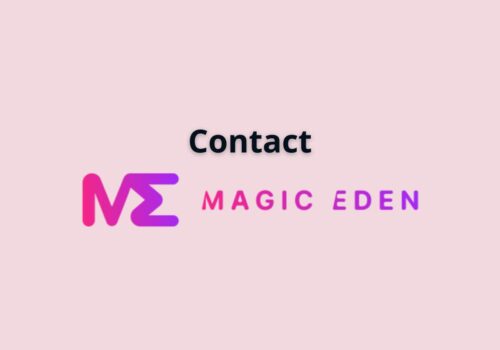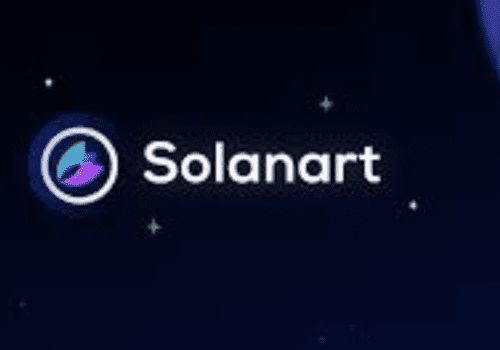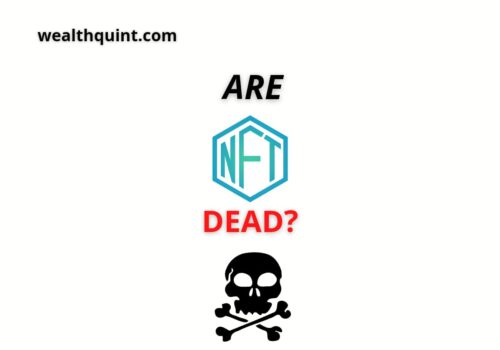In the digital world, NFTs have wrecked everything. Because NFTs are not “fungible,” they cannot be exchanged for other NFTs; they have a unique value and no two NFTs are the same.
As a result, NFTs are here to stay and their definition is widely agreed upon, therefore they were developed.
Non-fungible tokens (NFTs) have been in the news a lot lately, although they’ve been around for a while.
Businesses of all sizes are grappling with a plethora of issues caused by this new type of digital asset.
Merriam Webster’s Editor-in-Chief reportedly made some comments about the inclusion of NFTs in the dictionary — it appears that the decision wasn’t contentious, but was made since.
Below is the list of Top 20 Exciting NFT Trends Shaping the future of Non-Fungible Tokens:
1. Multichain NFT Marketplace Spores
The Spores marketplace aims to connect many blockchains in order to increase the transfer and utility of non-fungible tokens because most existing NFT marketplaces are based on Ethereal. Interoperability and the Spores network’s capabilities make it a decentralized cross-chain NFT marketplace.
To establish a full-stack interoperable NFT platform, the Asian NFT platform, recently received $2.3 million in funding. This money will be used to build a platform for the sale and transfer of tokens that are non-fungible.
By storing their NFTs in liquidity pools, platform users can earn rewards and have access to Defi borrowing and lending utilizing their NFTS collateral in exchange for their NFTs.
2. Cardano Unsigned Algorithms
These first Cardano-based algorithmically generated art pieces are referred to as “unsigs.” As an alternative to the ERC-721 standard, unsigs uses strong mathematical methods to create code that makes art.
A German computer science student and a Japanese enthusiast of a geometric and parametric design constructed the first NFT platform on Cardano.
More than 31,000 artifacts are part of its collection. Instead of using the Blockchain as a dropbox or Google Drive, Python programming methods were used to create each one-of-a-kind artwork.
You can store NFTs in Daedalus wallets instead of sending money to an exchange (Coinbase, Binance) and risk losing your money.
3. NFT Marketplaces
Markets are a natural area to use NFTs. For more than only their security, Blockchain-based markets can significantly reduce transaction fees and guarantee trustless transactions.
Shoppers and merchants will be able to communicate more directly with one other in the future.
NFT kittens were all the rage last year in a new computer game where users could breed them and then sell them.
As a result of the high demand for CryptoKitties, Ethereum’s network capacity was exceeded, slowing down transactions.
In 2021, there are already hundreds of NFT-based games accessible. NFTs are already present in a number of commercial games. In the future, NFTs may have an impact on even in-game marketplaces.
4. OpenSea Transforms Into A Unicorn!
As the next crypto industry unicorn, Andreessen Horowitz helped raise $100 million for the New York-based NFT marketplace Opensea. As of today, the market value of Opensea has risen to $1.5 billion.
Along with Andreeson Horowitz (A16Z), Kevin Durant, Michael Ovitz, Ashton Kutcher, the CEO of Shopify and Tobi Lutke contributed to the fundraising.
Additionally, Opensea has developed one of the first cross-chain platforms capable of supporting NFTs on other blockchains, such as Klatyn and Polygon. As a result, the site no longer requires any gas, and musicians can now earn their way into cryptocurrency.
This round of funding shows that NFTs have a long and bright future in the marketplaces where they are present.
5. NFT Avatars
Non-traditional digital goods can be created with NFTs. A good example is the use of avatars. You can tell the difference between two characters by looking at how they act or perform in a game.
As the next generation of internet user interfaces, NFT avatars may eventually displace traditional banking methods for online services.
6. NFT Messaging Apps
NFTs have made a Blockchain-based version of Snapchat’s self-destructing messages a feasible option for secure communications on the Blockchain. If you don’t want any evidence of your communications to be left behind, this is ideal (but still has an audit trail).
You can also use NFT messaging apps, which do not require you to input your phone number to send messages. A person could utilize this service if they don’t want their phone number public or if they need to contact someone they don’t know personally.
NFT messaging apps may be a viable option for businesses that need to communicate with clients but do not want to have access to their personal information.
7. Coca-Cola Introduces NFTs
Coke is introducing its first-ever NFT collection, which comprises four exclusive Coca-Cola NFTs. This is a first for the company.
The line includes virtual reality clothes with Coca-Cola themes, as well as acoustic visualizations of the bottle opening and the drink being served over ice.
Because of the auction’s proceeds, Coke says the winning bidder will receive an actual refrigerator full of ice-cold soda to share with their friends.
This isn’t surprising given Coca-lengthy Cola’s history of influencing popular culture, which includes NFT and metaverse realms.
8. Jay-Z Has Joined The NFT Wave
One of Jay-most Z’s recent acquisitions was an NFT (Crytopunk), which he purchased for $126,000 using cryptocurrency in April.
Cryptopunk NFT was recently used as the rapper’s Twitter avatar, indicating that he has entered the crypto sphere. An NFT also referred to as a Cryptopunk, has lately been purchased by him.
Derrick Adams reimagined and re-contextualized the album cover for Reasonable Doubt’s 25th anniversary, and the result is a new contemporary version of an era-defining portrait—a statement and reminder that Reasonable Suspicion remains relevant and new today.
9. Cryptopunk Records-Breaking Sale
The uniqueness and ERC-20 standard of Larva Labs’ 10,000 Ethereal Blockchain characters set them apart from other tokens.
“Covid Alien # 7523” was sold by Sotheby’s in June for $11.8 million, according to the New York Post. Digital sports business DraftKings’ principal shareholder, Shalom Mackenzie, bought the punk.
Some punks have sold at high prices (punk # 3100 sold in April for $4,200 Eth and was worth $7.58 million at the time of sale) but despite this, the most expensive sale of a crypto punk has been made, despite some punks having sold at high prices in the past.
10. NFT Identity
NFTs, as previously mentioned, can be used to prove and securely transfer ownership of a piece of property. Even decentralized government services might benefit from this, including borderless travel and fast KYC verification for financial institutions.
Because NFT technology’s ultimate goal is to demonstrate something’s legitimacy, and identification may very well be a component of that, what is achievable with NFT technology in this field is almost endless.
To name a few, there are credit cards, debit cards, and travel documents.
11. NFT Wallets
As NFTs become more popular, it is imperative to have a safe place to keep them. This is where NFT wallets come in!
These wallets may have additional security features, like password protection and encrypted backups, in addition to keeping your NFTs. Asset management can also be simplified by offering an interface specifically for NFTs.
In comparison to other kinds of digital wallets, NFT wallets provide a number of advantages. The user experience is streamlined, and security is improved as a result of their implementation. NFT wallets also make it possible for users to keep all of their cryptocurrency in one place.
This means that anyone can view and edit the source code of an NFT wallet. As a result, they are better able to manage their assets and make more precise disclosures.
NFT wallets are a great option for anyone who wants to store their digital assets in a safe place.
12. Credit Cards With NFT
One of the most interesting potentials uses for NFTs is the ultimate replacement of current credit card systems. We can construct a new sort of credit card that accepts NFTs as collateral using Blockchain technology. Individuals can borrow money using digital assets as security without forfeiting their digital assets.
NFT cards work just like any other credit card. In addition, ATM withdrawals and store purchases are also possible. When compared to traditional credit cards, NFT credit cards provide some unique benefits.
NFT credit cards are linked to your bitcoin wallet. You can protect your financial information by using blockchain technology. When a transaction occurs, such as a purchase or a withdrawal from an ATM, you can set up notifications to alert you.
When it comes to transparency, traditional credit cards fall short. Several examples include the ability to see every transaction made with your card, as well as the associated costs. Fortunately, all of this information is safely saved on the blockchain, and it can be accessed from anywhere in the world.
13. NFT Streaming
NFT streaming has made it possible to stream digital assets in real-time. Among the many possible applications of this technology are live auctions, gambling, and voting. Suppose you were able to wager on a game or watch an auction in progress.
If you don’t want to download the whole file, you can stream it directly from your computer to any device. It’s great for on-the-go entertainment because it doesn’t take up any storage space on your phone or tablet.
14. NFTs Based On Artificial Intelligence
Artificial intelligence (AI) is poised to become the next big technology disruptor, following Blockchain. Hence, their socializing hasn’t been shocking. AI has already begun to produce nonlinear transitions as a first step (NFTs).
However, this is nothing new. At Christie’s, Obvious Art sold a GAN-created piece of art for around $400,000. Thus, new AI initiatives are constantly generating new NFTs, and the value of digital assets is now generally recognized.
15. NFTs Are Bringing The Digital Art Industry Back To Life
With the record-breaking sale of digital artist Beetle’s Everyday: The First 5000 Days as an NFT for the US $69 million, the public’s interest in digital art looks to have been reignited once again.
Digital files can now be authenticated and traced for the first time in history, thanks to the adoption of the blockchain by NFTs and other distributed ledger technologies.
Aside from that, you can use NFTs to make direct sales of artwork to your target audience, following the paradigm envisioned in the Bitcoin whitepaper (peer-to-peer sales).
NFT tokens also give artists the ability to commercialize their work in unique ways, such as by offering fractionalized tokens or by selling an NFT of a “work in progress”.
Artists can earn from royalties and secondary sales of their work by introducing smart contracts into networked financial technologies. This may give them new sources of income in the future.
16. NFTs Are Revolutionizing Play-to-Earn Gaming
Play-to-earn games that are built on blockchains and powered by cryptography are now a reality, thanks to the advent of NFTs, which have breathed new life into the gaming industry.
The adoption of NFTs heralds the beginning of a new age in gaming, one that grants gamers ownership of in-game assets, which they can then sell for a profit on NFT marketplaces.
It was one of the most popular games of 2021, and it made use of both NFTs and the cryptocurrency Axie Infinity, which made it one of the most popular games of the year. Trading volume on Axie Infinity’s NFT market surpassed $1 billion for the first time in August, marking a significant milestone.
To gain access to the game’s tokenized characters, players must first pay three Axie NFTs to the game’s developer.
The limited supply of Axis forces players to feel a feeling of scarcity, which makes them more valuable in the long term due to the rising player base.
17. NFT Collectibles
At the moment, NFT collectibles are perhaps the most popular type of NFT, thanks to an internet craze that has swept throughout the globe.
Digital assets can be used to demonstrate ownership and provide a novel method of gathering and showing items. They can also be used to establish ownership of intellectual property.
In addition to ensuring that collectors have exclusive access to rare artifacts, this can also be used to prevent fraud and counterfeiting.
It is possible for artists to simply protect their name and ownership of their work using this type of technology, ensuring that everyone around the world is aware of where the artwork came from.
As a result, the value of artistic materials and non-monetary tokens has skyrocketed, with some individuals making millions of dollars from a single one-of-a-kind piece of work.
18. NFT Property Management
Additionally, NFTs can be used in the real estate market, which is a novel application for the technology.
It is possible that Blockchain technology could allow for the establishment of a new form of property register that will make use of Non-Fungible Tokens (NFTs) to prove ownership.
An intermediary would be eliminated from the process of purchasing, selling, or leasing real estate, as well as the expenses and time that would be associated with doing so.
19. Twitter Makes NFTs Available
In an article published by “The Entrepreneur”, Twitter users can now download 140 free limited-edition, rare-form NFTs from the NFT marketplace Radicle, which is a free service provided by Radicle.
All aspects of Twitter are represented in the NFTs, from the initial logo to a hint at the character limitation. Individuals were able to obtain things that were only available through the platform, which was created by the group.
20. NFTs Create Fundraising Opportunities For Charities
NFTs are also being investigated by charitable organizations, as the public becomes more aware of the advantages of tokenization and the possibilities of NFTs. Because NFTs have lower overhead costs than regular auctions, it is possible to build decentralized charitable projects online through the usage of non-profit organizations.
When non-fungible coins are utilized in conjunction with smart contracts, new altruistic alternatives are made available to participants (NFTs).
Because blockchain technology creates a transparent, publicly traceable database, it is possible to protect both NFTs and smart contract algorithms, ensuring that payments flow to authorize charitable organizations.
Therefore, charitable donations made using bitcoins can be conducted with less expensive transaction fees and practically instantaneous payment processing.
Conclusion
Up to this point, we’ve looked at 20 distinct trends that demonstrate how NFTs, along with their underlying Blockchain technology, has grown in functionality and adoption across a wide range of industries—from startups to major corporations—and how NFTs are poised to become the internet’s social value layer in the future.
The future depicted by these NFT patterns is intriguing. Whereas many others are worried about the metaverse’s consequences and the advent of AI, it’s an exciting future ahead.
It’s a future that will, for better or worse, shape the barrier between consumers and creators, provide worth and safety to digital assets, and freshen up the globe.




